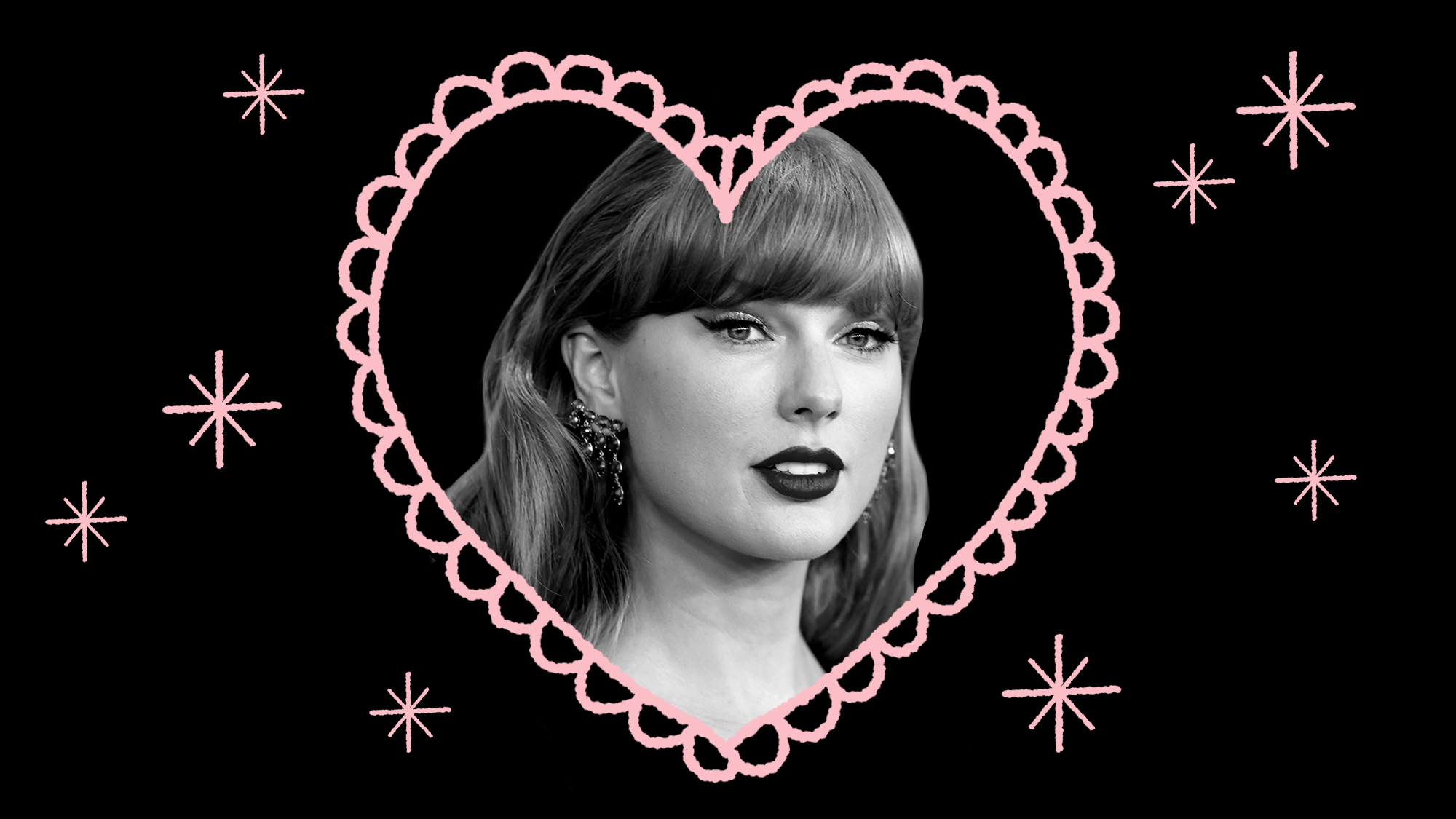This is an edition of The Atlantic Daily, a newsletter that guides you through the biggest stories of the day, helps you discover new ideas, and recommends the best in culture. Sign up for it here.
The fried chickens have come home to roost. Cracker Barrel is reverting to its old logo, fewer than 10 days after announcing a new, stripped-down version. The ensuing controversy has been at once a welcome distraction from other news and an outgrowth of all the most annoying impulses in American life.
The right-wing backlash to the company’s redesign stems from the claim that an avatar of small-town southern authenticity is being overrun by woke culture. But nothing about the change suggests wokeness. More important, Cracker Barrel has always been a simulacrum of rural life, a corporate behemoth masquerading as a mom-and-pop lunch counter. (It is to genuine Americana what Edward Sharpe and the Magnetic Zeros are to Clarence Ashley.) When the first Cracker Barrel opened, in 1969, the country was at the inflection point of a long, steep shift toward urban life. In 1940, roughly 44 percent of Americans lived in rural areas. By 1970, barely more than a quarter did. Cracker Barrel intended to capitalize on nostalgia for a way of life that was already disappearing.
And its restaurants would hasten that disappearance. The chain was founded as a way to sell gas—the founder’s family was in the fuel business; its locations were (and still are) largely clustered along interstate highways. The interstate system is a modern marvel, but the creation of huge freeways that bypassed the old U.S. highways sapped commerce and population from towns that relied on car traffic, destroying truly eccentric culture—such as the old Route 66—and replacing it with drab chains that were the same, no matter which exit ramp you took to get to them.
At Cracker Barrel, the bric-a-brac and the addictive peg game were meant to make customers forget all of that. It’s neither old nor a country store, no matter what the signs say. Instead, it’s of a type with Walmart, another native southern chain founded in the 1960s—and one that, as my colleague Rogé Karma reported last year, “uses its low prices to undercut competitors and become the dominant player in a given area, forcing local mom-and-pop grocers and regional chains to slash their costs or go out of business altogether.”
Cracker Barrel has, however, become closely associated with Republican voters. The political analyst David Wasserman noted that counties with Cracker Barrels tend to vote more Republican, and counties with Whole Foods stores vote more Democratic. (Whole Foods is a perfect progressive foil to Cracker Barrel—a slick, Amazon-owned chain version of the local organic-food co-op.) The insistence that the restaurant chain had gone woke was driven in part by the conservative attention impresario Christopher Rufo, who is an unlikely spokesperson for rural America: He grew up in Sacramento, California; went to college in Washington, D.C.; lives near Seattle, on Puget Sound; and works at the Manhattan Institute. As in other Rufo-related news stories, determining where the paranoia ends and cynical agitprop begins is difficult.
But the drabness of Cracker Barrel’s quickly abandoned new logo—and it truly was dreadful—wasn’t an indication of wokeness. (This is a company that settled a lawsuit brought by the George W. Bush administration over alleged violations of the Civil Rights Act of 1964.) Instead, the rebrand was a natural progression of Cracker Barrel’s original mission, another way for corporate leaders to sand off rough edges of vernacular culture.
“Whether it’s Cracker Barrel’s Southern decor or distinct regional accents, the differences that make America such a unique place are giving way to a monoculture that’s being pushed, intentionally or otherwise, by corporate and media forces,” The Federalist’s Hayden Daniel moaned earlier this month. He’s right about the dismal sameness seeping into much of American life, but Cracker Barrel is a culprit, not a victim.
In addition to the logo redesign, the chain also revamped the aesthetic of some of its restaurants. With its off-whites, symmetrical arrangements, spare decoration, and vertical lines, this look is a version of the modern-farmhouse style, which has been popularized by Chip and Joanna Gaines, another southern business powerhouse. Cracker Barrel began by offering a sanitized version of the mid-century South, and now it’s simply updated to the 2020s. The chain is just one part of the real corporate monoculture. Much of the country now resembles a poor copy of the South, with all of the Confederate flags but none of the interesting, quirky bits that make living here worthwhile.
Even with its quick reversal—and praise from the president—Cracker Barrel may take a hit from this controversy. Bud Light still hasn’t recovered after its partnership with a trans influencer incited a conservative boycott in 2023. Tropicana lost significant market share after it redesigned its bottle in 2024. These cases show that consumers can be deeply conservative in both the political and temperamental senses. But no one should be fooled about what Cracker Barrel represents: It’s authentically only a symbol of the faceless corporate desire to improve the bottom line.
Related:
- Eight books that explain the South (From 2022)
- The bitter truth about the Bud Light boycott (From 2023)
Here are three new stories from The Atlantic:
- The markets won’t save the Fed from Trump.
- The new Millennial parenting anxiety
- Trump is trying to shut down a lending program that helps his voters.
Today’s News
- Two children were killed and 17 people were injured in a shooting at Annunciation Catholic School in Minneapolis; the shooter died from a self-inflicted wound, according to police. The FBI is investigating the incident as an act of domestic terrorism and a hate crime, according to FBI Director Kash Patel.
- Transportation Secretary Sean Duffy said that his department will exert “renewed control” over Union Station in Washington, D.C.
- President Donald Trump’s 50 percent tariffs on nearly all Indian imports went into effect today, a move aimed at punishing India for purchasing Russian oil.
Evening Read

The Tortured Poet of Love Gets Engaged
By Julie Beck
It’s hard to imagine a world in which Taylor Swift didn’t eventually get married. Perhaps no artist today has an identity tied as closely to the idea of a forever love as hers is. So the Instagram announcement yesterday about her engagement to her boyfriend of two years, the Kansas City Chiefs tight end Travis Kelce, felt existentially fitting, even preordained.
More From The Atlantic
- The defiant conventionality of Taylor Swift and Travis Kelce
- Maybe a new Melania magazine cover will give Trump what he’s been seeking.
- When children forget the colors of foods
- The David Frum Show: Why America isn’t Rome (and why that matters)
Culture Break

Watch. Shirley Li explains why the Chinese animated fantasy film Ne Zha II has made more money than any Star Wars sequel.
Read. Miriam Toews’s latest book, A Truce That Is Not Peace, probes the hardest question for a writer to answer, according to Kristen Martin.
P.S.
Because I mentioned Clarence Ashley above, I must specifically recommend “Peg and Awl,” by the Carolina Tar Heels. Like so many people, I learned it from the Anthology of American Folk Music, which was first released in 1952, but the song is older. Clarence Ashley and two of his bandmates cut the track in 1928, and the lyrics are set in the 1800s. Even so, the subject matter remains timely: It’s about jobs lost to automation (in this case, making shoes). But unlike the folk hero John Henry, another victim of industrial innovation, the singer doesn’t keep fighting until he dies. He sounds just as happy to move on to other work: “Peggin’ shoes, it ain’t no fun. Throw away my pegs, my pegs, my pegs, my awl.”
— David
Rafaela Jinich contributed to this newsletter.
When you buy a book using a link in this newsletter, we receive a commission. Thank you for supporting The Atlantic.
The post Cracker Barrel Was Never Real Americana appeared first on The Atlantic.




